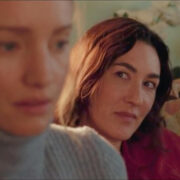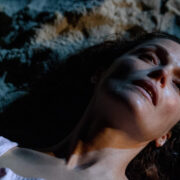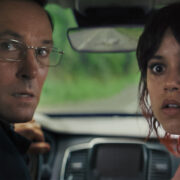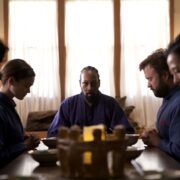Away From The Hype: THE CABINET OF DR CALIGARI
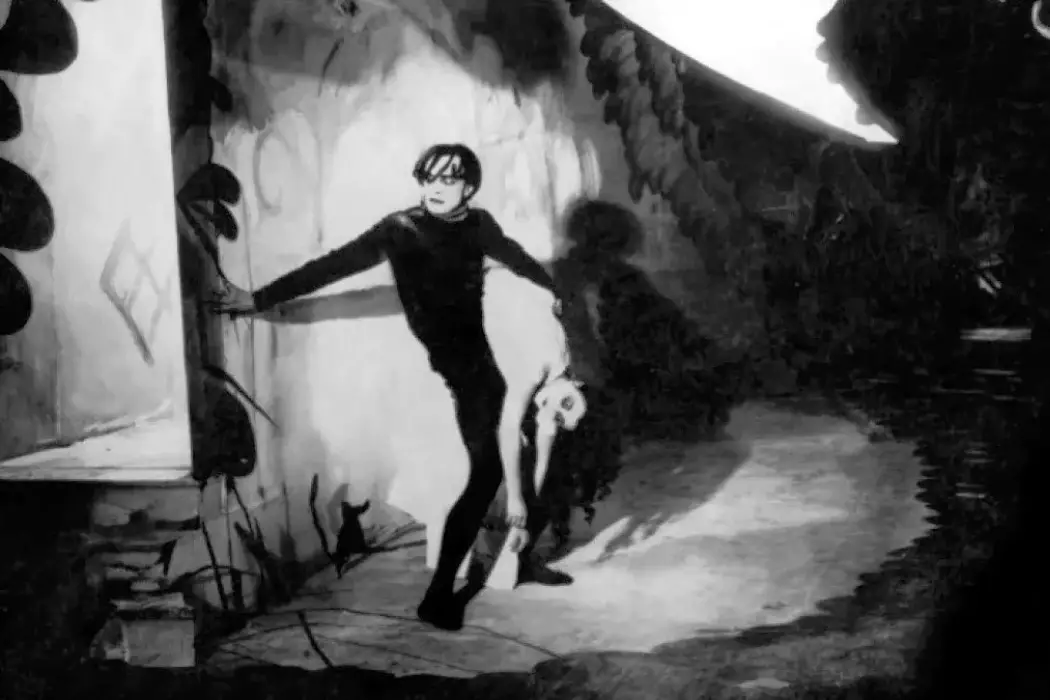
A writer in Australia, Sean used to be a TEFL…
I love to see the origin of movie tropes. Knowing the first movie to do a certain thing and thinking about what it must have been like to see that fascinates me. It is especially interesting when that trope has been done to death like a person walking away from an explosion, a post-credit scene, or a cat jumping from the shadows as a fake-out scare.
A genre that is built on tropes is horror. Horror movies are so built on tropes that there is an entire franchise of slasher movies based around horror tropes and every few years we get a Cabin in the Woods or a The Final Girls skewering them for comedic and horrific effect. That the horror genre survives and thrives even in the face of this is a testament to how much we love being scared and how thin the line is between fear and laughter.
1920’s The Cabinet of Dr Caligari was described by Robert Ebert as the first true horror film. Movies with horror elements existed before it like The House of the Devil, a three-minute “movie” from 1896, but Cabinet with its use of atmosphere, suspense, and distinct visual style would set the tone for what a horror movie would be.
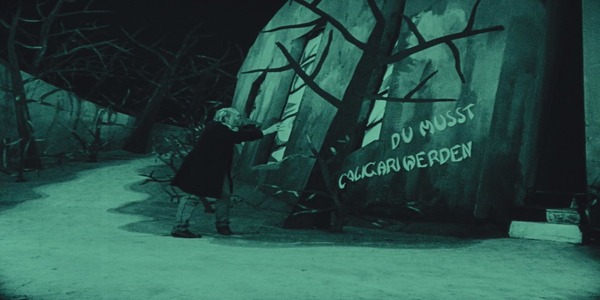
A black-and-white silent German expressionist movie seems either like an odd place to find the first horror or a perfectly apt one. Horror is a transmutable genre and is always evolving but at its heart, it is always unchanging in its attempts to give us a scare and get our hearts pumping so I imagine a horror movie in 1920 and a horror movie in 2023 wouldn’t be too dissimilar at their core.
I haven’t seen the movie but know it by reputation and because Nicholas Cage’s character Nick Cage said it was his favorite movie in The Unbearable Weight of Massive Talent, which lodged it in my brain until it finally became available to rent from my local library and I could see hundred years away from the hype.
The Cabinet of Dr Caligari
If you’ve seen this movie, you would guess that I’m mostly going to talk about the set design, and you would be correct. However, considering my reasoning for watching this movie I would be remiss if I didn’t first talk about it in terms of its reputation as the first true horror movie.
When we think of horror movies, we usually think of jump scares. I’d argue the best horror movies aren’t the jump scare-heavy ones as the effect of a jump scare wears off quickly upon rewatch whereas something like The Exorcist (my favorite movie and arguably the greatest horror movie ever) relies on atmosphere and infecting your mind with the creeping dread that when you go for a pee in the middle on the night, the devil is going to be waiting for you behind the shower curtain.
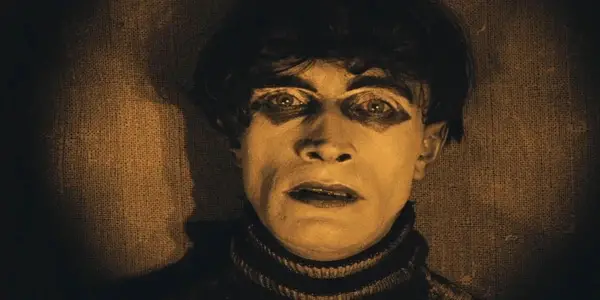
Cabinet is more that kind of horror movie. It’s slow and atmospheric with a hint of melodrama that is inherent in silent movies where a character has to convey a lot of their emotions through big movements and wide eyes. There are no jump scares or gotcha moments, just a terrifying villain in the form of the grotesque Dr Caligari and an unnerving monster played by Conrad Veidt, a man whose character in 1928’s The Man Who Laughed inspired the creation of one of the most iconic villains in print and on screen, The Joker.
Veidt‘s character is Cesare the somnambulist, a man who has slept for 23 years and can only be awakened by Caligari. He can tell the future and at night goes out to murder those who have wronged Dr Caligari. Though, thinking about it, the only future he tells is to the main character Francis’ friend Alan. He tells him he’ll be dead by dawn then murders him in his bed. So yes, he predicts his death correctly but I’m not sure it counts as prognostication if you’re the one who does the killing.
Veidt‘s character is emaciated and dressed in skin-tight black clothes. His face is deathly white with huge panda spots of darkness around his eyes. He is a chilling apparition from a nightmare and still very effective a hundred years after the movie’s release. The scene in which he goes after Jane, the local doctor’s daughter and Francis’ love interest, feels like the prototype for so many vampire movies. As he climbs in through the window and makes unhurried progress towards the white-dressed sleeper in the bed.
The tension of waiting for the murderer to strike is as haunting and tense as any modern horror movie and the lack of cuts or tricks make it perhaps even more effective. A static camera watching a ghastly figure walk without haste towards a potential murder victim locks your eyes to the screen, hoping that Jane will wake in time.
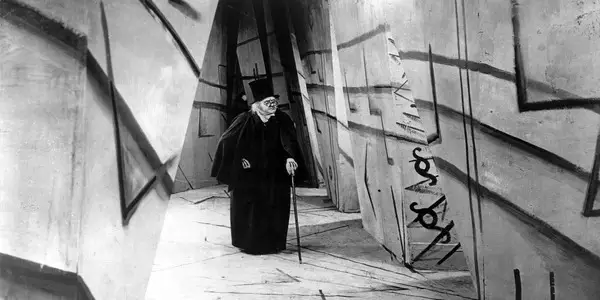
Chances are if you’ve heard of this movie before it will be because of the set design and overall aesthetic. Every scene feels like looking at a city through a broken window with all sharp angles and tilting walls. Technical hindrances meant the filmmakers had to paint the shadows directly onto the walls giving such an unearthly effect of constantly encroaching darkness. Every frame of this movie is a work of art and a terrifying world that our characters are trapped within.
The joy of the movie moving pretty slowly with long lingering takes is the chance to savor the design and its utter weirdness. No effort has been made to simulate any kind of realistic world. This is a fractured nightmare town where sleepwalkers kill you and walls seem sharp enough to draw blood.
Conclusion
While not as gory or jumpy as a modern horror movie, and also very much moving at the pace of a movie from 1920, The Cabinet of Dr Caligari is definitely a horror movie. It is not simply spooky or macabre, it is designed for terror down to its twist ending and final seconds.
Watching it 100 years after its release, it does show its age in obvious ways. It is a silent movie after all. But it was never boring or labored. It doesn’t creak under the pressure of a century. The performances are those huge, frantic ones you often get from silent movies but there is also a lot of subtlety in there too, especially from Conrad Veidt and Werner Krauss as the devious Dr Caligari, the kind man who kills a council clerk for being a bit rude to him.
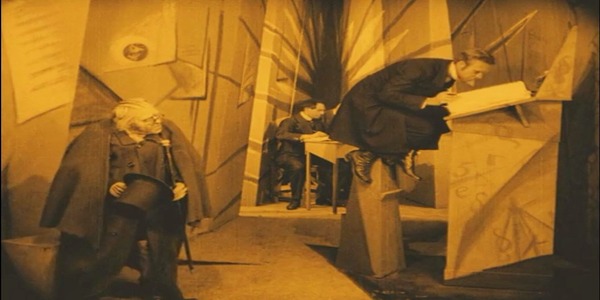
The Cabinet of Dr Caligari’s influence and legacy is one that most moviegoers probably aren’t aware of. The Shining’s use of space and winding corridors that make no sense, the shadowy knife-wielding Norman Bates in Psycho, Tim Burton’s nightmarish set designs, and Lynchian unreliable narrators and dreamlike storytelling all owe something to this movie.
If you’re a movie nerd or you want something brand new to spend 80 minutes with, you want to check out this movie. It’s fun, spooky, and one of the most beautifully designed movies ever made. It also has a pretty amazing soundtrack and none of that annoying speaking that so often gets in the way of a good movie.
Watch The Cabinet of Dr Caligari
Does content like this matter to you?
Become a Member and support film journalism. Unlock access to all of Film Inquiry`s great articles. Join a community of like-minded readers who are passionate about cinema - get access to our private members Network, give back to independent filmmakers, and more.
A writer in Australia, Sean used to be a TEFL teacher and is now an academic consultant. He has been published in The Big Issue, Reader's Digest, Talk Film Society, and Writer Loves Movies. His favourite movie is The Exorcist and he prefers The Monster Squad over The Goonies. He is also the co-host of the Blue Bantha Milk Co. YouTube channel.


